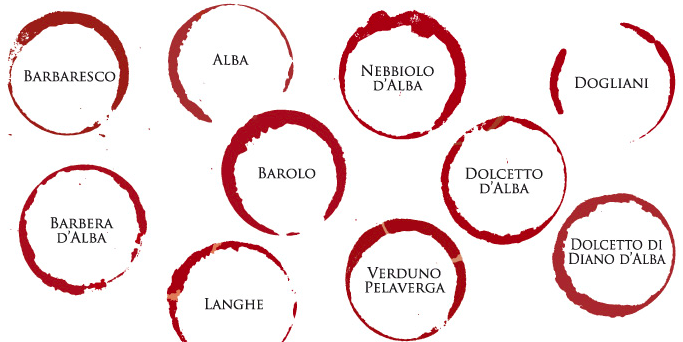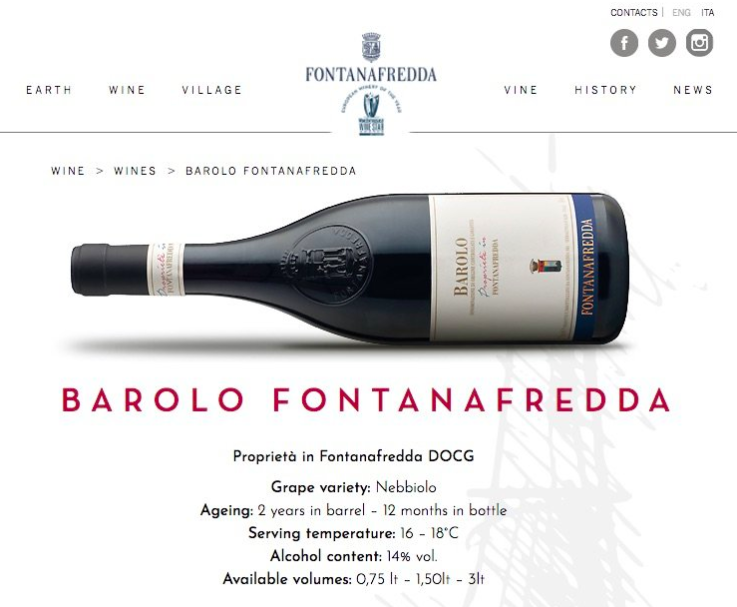Posted: Jan 16, 2018

Barolo is often discussed as if it’s a monolith. It is not, just as Napa Valley, Burgundy, the Barossa, Pfalz, and others aren't either.
Let’s be honest: Most wine classification terminology confuses consumers. The difference between grand cru and premier cru villages in Champagne, first and third growths in Bordeaux, the exact meaning of reserve in Chianti versus Rioja versus Napa—all of these are enough to drive people to drink.
So let’s add another one to the mix! MGAs, or menzioni geografiche aggiuntive, are specifically delineated place-names within Barolo that have been codified since 2010. Now, one of the only “monopole” MGAs of Barolo, and the only one that takes the name of its producer, is on the American market: The Fontanafredda Barolo “Proprietà in Fontanafredda” 2013, which was released in March 2017, hit U.S. shores in the autumn, and is now more widely available.
Barolo is often discussed as if it’s a monolith. It’s not, just as Napa Valley, Burgundy, the Barossa, Pfalz, and others aren’t either. And while there are definitive styles that are produced in Barolo, the wines embody a range of expressions of both winemaking philosophy and terroir—and therefore characteristics in the glass.
The language on the labels can often help provide an idea of what to expect of the juice inside the bottle. Fans of Barolo have become familiar over the years with the most recognizable of the 11 commune names that appear on the labels of certain ones: Castiglione Falletto and Monforte d’Alba, for example. Within these communes, there are individual vineyards that have gained notoriety in their own right, like Rocche di Castiglione in Castiglione Falletto.
Of course, a place like Barolo, with its rolling hills and countless crenellations and slopes that nebbiolo is grown on, consists of land that is far more varied than even the entirety of single-vineyard wines on the market can account for. Which is why the work of delineating the broad range of MGAs began.
This task was completed in 2010, and resulted in 181 names (all included under the rubric of menzioni geografiche aggiuntive, or MGAs, and among which are 11 villages or communes) that can be used on a wine’s label. They are separate from single-vineyard wines—Fontanafredda, for example, bottles a Barolo from a single vineyard within their eponymous MGA, called Vigna “La Rosa.” Among these MGAs there is no implied or explicit classification of quality, nor is there a guarantee, given the complexity of the land in Barolo, that any specific MGA will be homogenous in terms of terroir. To make it all even more confusing, neither the letters MGA nor the words menzioni geografiche aggiuntive have to appear on the label. It’s up to consumers to look for the names of the places themselves on the bottle—or for sommeliers and retailers to explain it all when the wine is ordered or purchased.
Among these MGAs there is no implied or explicit classification of quality, nor is there a guarantee, given the complexity of the land in Barolo, that any specific MGA will be homogenous in terms of terroir. To make it all even more confusing, neither the letters MGA nor the words menzioni geografiche aggiuntive have to appear on the label. It’s up to consumers to look for the names of the places themselves on the bottle—or for sommeliers and retailers to explain it all when the wine is ordered or purchased.
Still, it’s a start, if still a confusing one. “It would be nice if the MGA did adopt a uniform criteria that was an indicator of quality, and from appellation to appellation meant the same thing,” pointed out Jeff Benjamin, co-founder of Vetri Family and executive vice president of the Fitler Club, which is set to open in Philadelphia next year. But if this particular bottling is any indication, the continued arrival of MGA bottlings on the American market should be a positive phenomenon—and a potentially delicious one at that.
Aromatically, the Fontanafredda Barolo “Proprietà in Fontanafredda” 2013 is extremely complex even at this early stage of its evolution, with a layered mix of wild berries, forest floor, and black licorice preceding flavors of cherry, vanilla pod, a seam of minerality, and a finish that lingers with the memory of violets. It’s excellent now with a stint in the decanter, and will continue to improve for well over a decade if stored properly.
As with regional Italian cuisines, the differences between wines from one appellation to another, and even among adjacent hillsides within a particular zone of production, are becoming more important to American professionals and consumers alike. The MGAs of Barolo, while far from perfect as a system of delineation, are a step in the right direction, and possess the potential to be an awfully tasty way to experience the minutiae of the king of wines, as Barolo is often known, in a whole new way.
By Brian Freedman
January 12, 2018
Source: Foodandwine.com
Image bottle: Fontanafredda.it
Go-Wine's mission is to organize food and beverage information and make it universally accessible and beneficial. These are the benefits of sharing your article in Go-Wine.com


The Wine Thief Bistro & Specialty Wines is a locally owned small business in downtown Frankfort, IL offering world class wines in a relaxed, casual gathering spot for friends and family. Offering world class virtual tastings and touchless carryout.
https://www.twtwineclub.com/aboutus
Go-Wine 25 Great Wineries in US selection prioritizes quality, value and availability.
www.go-wine.com/great-wineries-in-america
Tasting wine is a nice experience, but visiting the places in which wine is made is a magic moment. Available in New York City for touchless pickup.